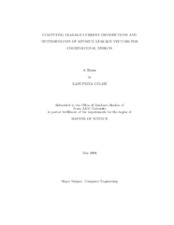| dc.description.abstract | Analyzing circuit leakage and minimizing leakage during the standby mode of oper-
ation of a circuit are important problems faced during contemporary circuit design.
Analysis of the leakage profiles of an implementation would enable a designer to
select between several implementations in a leakage optimal way. Once such an im-
plementation is selected, minimizing leakage during standby operation (by finding
the minimum leakage state over all input vector states) allows further power reduc-
tions. However, both these problems are NP-hard. Since leakage power is currently
approaching about half the total circuit power, these two problems are of prime rel-
evance.
This thesis addresses these NP-hard problems. An Algebraic Decision Diagram
(ADD) based approach to determine and implicitly represent the leakage value for all
input vectors of a combinational circuit is presented. In its exact form, this technique
can compute the leakage value of each input vector, by storing these leakage values
implicitly in an ADD structure. To broaden the applicability of this technique, an
approximate version of the algorithm is presented as well. The approximation is done
by limiting the total number of discriminant nodes in any ADD. It is experimentally
demonstrated that these approximate techniques produce results with quantifiable
errors. In particular, it is shown that limiting the number of discriminants to a value between 12 and 16 is practical, allowing for good accuracy and lowered memory
utilization.
In addition, a heuristic approach to determine the input vector which minimizes
leakage for a combinational design is presented. Approximate signal probabilities of
internal nodes are used as a guide in finding the minimum leakage vector. Probabilistic
heuristics are used to select the next gate to be processed, as well as to select the
best state of the selected gate. A fast satisfiability solver is employed to ensure the
consistency of the assignments that are made in this process. Experimental results
indicate that this method has very low run-times, with excellent accuracy, compared
to existing approaches. | en |


